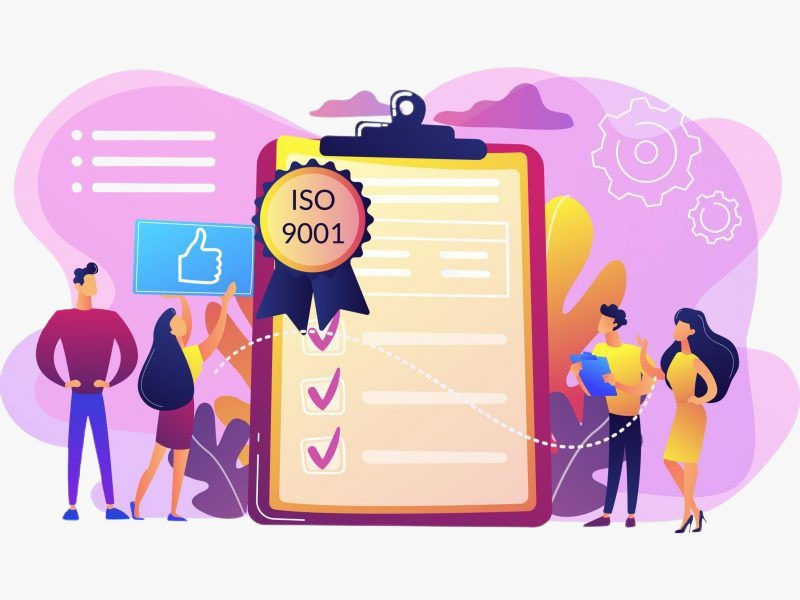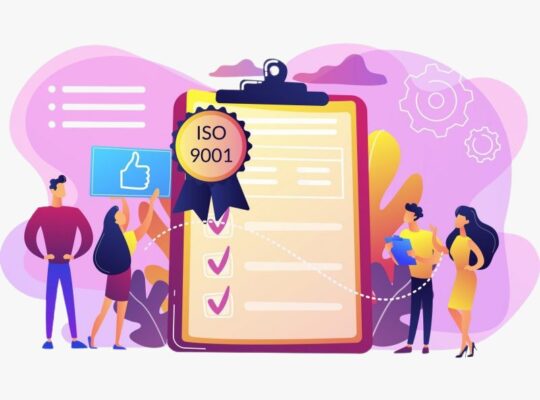ISO refers to the International Organization for Standardization. It is an independent organization that provides standards in terms of quality, safety, and efficiency of products and services provided by businesses. The ISO certification for quality management systems demonstrates the delegation’s commitment to flexibility, continuous improvement, and providing students with high-quality education. The benefits of ISO certification for educational institutions are significant. Furthermore, ISO Certification is critical in establishing a long-term high-performance culture. Every educational institute, schools, colleges and others looks for development with the help of ISO Certification. ISO Certifications help them to make their system and process better.
ISO Certification for educational institutions
ISO 21001 is an international standard established by the International Organization for Standardization which renders management tools for organizations that offer educational products and services. Also, it intends to assist education providers to meet students’ requirements and needs.
ISO 21001 is based on ISO 9001 – Quality Management Systems, but it provides a specific framework for educational organizations. Also, it aims to improve the satisfaction of their learners by improving the educational processes and ensuring conformity to learners’ requirements.
Benefits of ISO 21001 for educational organizations
By becoming ISO 21001 certified, you will be able to:
- Enhance your education system
- Intensify the reputation of your educational institution
- Encourage equal opportunities for all students despite their religious background, ethnic or cultural origin, gender, ability/disability
- Furnish personalized training and effective response to all learners
- Stimulate perfection and innovation
- Present education more accessible
From the outside, we consider teaching to be more of an acquired talent than a full-time profession. To put it another way, we see instructors educating themselves, training, and earning degrees, and then doing one job for as long as they see fit. In a technical sense, this is correct, but the reality is that teachers must have the ability to adapt. ISO 21001 standards support this growing emphasis on flexibility by offering additional guidelines for a wider range of scenarios. While teachers and educational leaders should be able to adapt on their own and be innovative in solving new difficulties, ISO 21001 offers a framework for many of the changes that may occur.
Surprisingly, another important feature of ISO 21001 standards for educational institutions — both in schools and elsewhere — is that they can help level the playing field for students. Given the aforementioned example of standardized testing as an existent standardized education approach that can actually lead to less fairness amongst students, this is almost ironic. Because ISO 21001 offers recommendations for a wide range of scenarios involving education and how learners should be engaged and managed, the objective is that the standards would eventually result in a more consistent education ecosystem. This does not imply that every institution and educator must be identical, nor that they must all educate in the same manner. Specific challenges, on the other hand, should be treated in the same way, so that one learner having trouble in one setting isn’t given any less of a chance to solve the problem than another student in a different institution. It will be intriguing to examine how ISO 21001 affects educational institutions in the long run. However, the practices and possible advantages stated above demonstrate why such guidelines are worthwhile to investigate.
7 steps towards ISO Certification
First Step (Documentation): Create a School & Education Institutes Quality Manual in compliance with ISO 9001:2008 requirements. Create a quality plan and aim for schools and educational institutions. Determine each person’s role and responsibilities inside the organization. Provide mindfulness training on ISO 9001 requirements, quality approach and aim, method, strategy, criteria teaching plan, school organization graph, school layout, and various plan to each individual. On the actualized QMS Management System, lead the Internal Audit and Management survey meeting.
Second Step (Identification of school & education institutes process):
- Administering administrations, applicants process, allocating spaces for homerooms, labs, workshops, libraries, and other comparative spaces,
- Allocating showing loads, assessing student execution, designing and creating approval consequences of educational programmes or schedules are some of the procedures used by schools and education institutes.
- Creating course lists, creating course materials, etc.
- The hiring of regulatory and exhibiting personnel, the process of marketing and enlistment, security, well-being, and basic insurance benefits are all provided. Students are chosen one by one.
Third Step (ISO certification process): In general, the certification body sends the application structure to obtain customer data associated with ISO Certification for Education Institutes India (e.g., total effective number of personnel, work movement, site/location, address, contact detail with email ID). They will determine the number of devices and other resources used to be reviewed based on this information, and will then issue the citation. Once you have approved the citation, they will contact you to set up a date for the stage 1 audit. Inspectors will mostly analyze preparation for stage 2 reviews in stage 1 reviews, but they will also be looking at the documentation section where you have already built up the manual, procedure, internal review, association graph, and process usage as mentioned earlier.
Fourth Step (Technical review/Certification option): After the review examiner has prepared the report and presented it to the technical audit and technical commentator, accreditation is advised. After the process of reviewing is completed, the testimony will be sent within 10 working days.
Fifth Step (Certification cost): The cost of accreditation varies from association to association and confirmation body to confirmation body. When all is said and done, the cost of accreditation will be calculated based on the number of representatives (full-time/part-time/subcontracted), the number of sites or branches of educational institution covered by the accreditation, and the number of working people.
Sixth Step (Selection of certification authority): There are many certification bodies in India; nevertheless, it is recommended that you pick one that has been accredited by an accrediting body. The second criterion for selecting an ISO certification body is the cost of accreditation, as well as whether or not the certification body’s administration is located in your surrounding vicinity.
Seventh Step (ISO certification training): The vast majority of people get ISO Training from the certification body for the use of the Quality Management framework inside the organization, but they are not recognized as the body. Our recommendation is to get the training from a recognized body close to your city. Recognized bodies will provide multi-day training and provide the most up-to-date information on ISO 9001:2008 Training.
The endorsement will be given by a perceived body, and this proclamation will be valid all over the world.


About the Author: Nishtha Gupta
Nishtha Gupta is a student of English Literature at Jamia Millia Islamia and currently based in New Delhi. She is extremely passionate about writing on technological advancements in the field of education. She also writes poetry and fiction. Nishtha has an e-book published with Amazon’s Kindle. Her other interests include music, reading and dancing. She wishes to pursue her career in the field of publishing.
This article has been re-published on Medium





